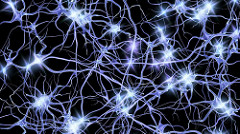About Me

I’m a scientist studying how brains and machines solve complex problems, drawing on tools and perspectives from computer science, physics, and neuroscience. I’m currently a Flatiron Research Fellow at the Center for Computational Neuroscience at the Flatiron Institute, where I work primarily with Professor SueYeon Chung. I earned my Ph.D. from Harvard’s Theory of Computation Group in 2023, advised by Professor Boaz Barak. You can learn more about my research here.
Outside of work, I’m an avid baseball fan and enjoy cooking, reading, playing Go, and listening to classical music.
Current Research
My current work focuses on developing theoretical frameworks and analysis tools to uncover principles and mechanisms behind neural networks. I draw on methods from statistical physics, optimization theory, and high-dimensional statistics to study how patterns of activity in neural networks relate to their performance. One such tool, GLUE, provides a unified framework for analyzing the geometric mechanisms behind the untangling of neural representations. Working with my amazing collaborators, we’ve applied GLUE to both neuroscience data and machine learning models—revealing previously unreported insights into memory, learning, and generalization.
See here for more details on my research and here for all publications.
Selected Publications
Feature Learning beyond the Lazy-Rich Dichotomy: Insights from Representational Geometry
Chi-Ning Chou*, Hang Le*, Yichen Wang, SueYeon Chung.
International Conference on Machine Learning (ICML 2025).
Selected for Spotlight Presentation.
[arxiv] [conference version] [abstract ] [bibtex ]
@inproceedings{CLWC25,
title={Feature Learning beyond the Lazy-Rich Dichotomy: Insights from Representational Geometry},
author={Chi-Ning Chou and Hang Le and Yichen Wang and SueYeon Chung},
booktitle={Forty-second International Conference on Machine Learning},
year={2025}
}
Integrating task-relevant information into neural representations is a fundamental ability of both biological and artificial intelligence systems. Recent theories have categorized learning into two regimes: the rich regime, where neural networks actively learn task-relevant features, and the lazy regime, where networks behave like random feature models. Yet this simple lazy–rich dichotomy overlooks a diverse underlying taxonomy of feature learning, shaped by differences in learning algorithms, network architectures, and data properties. To address this gap, we introduce an analysis framework to study feature learning via the geometry of neural representations. Rather than inspecting individual learned features, we characterize how task-relevant representational manifolds evolve throughout the learning process. We show, in both theoretical and empirical settings, that as networks learn features, task-relevant manifolds untangle, with changes in manifold geometry revealing distinct learning stages and strategies beyond the lazy–rich dichotomy. This framework provides novel insights into feature learning across neuroscience and machine learning, shedding light on structural inductive biases in neural circuits and the mechanisms underlying out-of-distribution generalization.
Geometry Linked to Untangling Efficiency Reveals Structure and Computation in Neural Populations
Chi-Ning Chou, Royoung Kim, Luke Arend, Yao-Yuan Yang, Brett Mensh, Won Mok Shim, Matthew Perich, SueYeon Chung.
In submission.
[bioRxiv] [abstract ] [bibtex ]
@article {Chou2024.02.26.582157,
author = {Chou, Chi-Ning and Kim, Royoung and Arend, Luke and Yang, Yao-Yuan and Mensh, Brett D and Shim, Won Mok and Perich, Matthew G and Chung, SueYeon},
title = {Geometry Linked to Untangling Efficiency Reveals Structure and Computation in Neural Populations},
elocation-id = {2024.02.26.582157},
year = {2024},
doi = {10.1101/2024.02.26.582157},
publisher = {Cold Spring Harbor Laboratory},
journal = {bioRxiv}
}
From an eagle spotting a fish in shimmering water to a scientist extracting patterns from noisy data, many cognitive tasks require untangling overlapping signals. Neural circuits achieve this by transforming complex sensory inputs into distinct, separable representations that guide behavior. Data-visualization techniques convey the geometry of these transformations, and decoding approaches quantify performance efficiency. However, we lack a framework for linking these two key aspects. Here we address this gap by introducing a data-driven analysis framework, which we call Geometry Linked to Untangling Efficiency (GLUE) with manifold capacity theory, that links changes in the geometrical properties of neural activity patterns to representational untangling at the computational level. We applied GLUE to over seven neuroscience datasets, spanning multiple organisms, tasks, and recording techniques, and found that task-relevant representations untangle in many domains, including along the cortical hierarchy, through learning, and over the course of intrinsic neural dynamics. Furthermore, GLUE can characterize the underlying geometric mechanisms of representational untangling, and explain how it facilitates efficient and robust computation. Beyond neuroscience, GLUE provides a powerful framework for quantifying information organization in data-intensive fields such as structural genomics and interpretable AI, where analyzing high-dimensional representations remains a fundamental challenge.
Limitations of Linear Cross-Entropy as a Measure for Quantum Advantage
Xun Gao, Marcin Kalinowski, Chi-Ning Chou, Mikhail D. Lukin, Boaz Barak, Soonwon Choi.
Physical Review X Quantum (2024).
[journal version] [arxiv] [slides] [abstract ] [bibtex ]
@article{PRXQuantum.5.010334,
title = {Limitations of Linear Cross-Entropy as a Measure for Quantum Advantage},
author = {Gao, Xun and Kalinowski, Marcin and Chou, Chi-Ning and Lukin, Mikhail D. and Barak, Boaz and Choi, Soonwon},
journal = {PRX Quantum},
volume = {5},
issue = {1},
pages = {010334},
numpages = {27},
year = {2024},
month = {Feb},
publisher = {American Physical Society},
doi = {10.1103/PRXQuantum.5.010334},
url = {https://link.aps.org/doi/10.1103/PRXQuantum.5.010334}
}
Demonstrating quantum advantage requires experimental implementation of a computational task that is hard to achieve using state-of-the-art classical systems. One approach is to perform sampling from a probability distribution associated with a class of highly entangled many-body wavefunctions. It has been suggested that this approach can be certified with the Linear Cross-Entropy Benchmark (XEB). We critically examine this notion. First, in a "benign" setting where an honest implementation of noisy quantum circuits is assumed, we characterize the conditions under which the XEB approximates the fidelity. Second, in an "adversarial" setting where all possible classical algorithms are considered for comparison, we show that achieving relatively high XEB values does not imply faithful simulation of quantum dynamics. We present an efficient classical algorithm that, with 1 GPU within 2s, yields high XEB values, namely 2-12% of those obtained in experiments. By identifying and exploiting several vulnerabilities of the XEB, we achieve high XEB values without full simulation of quantum circuits. Remarkably, our algorithm features better scaling with the system size than noisy quantum devices for commonly studied random circuit ensembles. To quantitatively explain the success of our algorithm and the limitations of the XEB, we use a theoretical framework in which the average XEB and fidelity are mapped to statistical models. We illustrate the relation between the XEB and the fidelity for quantum circuits in various architectures, with different gate choices, and in the presence of noise. Our results show that XEB's utility as a proxy for fidelity hinges on several conditions, which must be checked in the benign setting but cannot be assumed in the adversarial setting. Thus, the XEB alone has limited utility as a benchmark for quantum advantage. We discuss ways to overcome these limitations.
Linear Space Streaming Lower Bounds for Approximating CSPs
with Alexander Golovnev, Madhu Sudan, Ameya Velingker Santhoshini Velusamy.
Symposium on Theory of Computing (STOC 2022).
[arxiv] [eccc] [conference version] [abstract ] [bibtex ]
@article{CGSVV21,
title={Linear Space Streaming Lower Bounds for Approximating CSPs},
author={Chou, Chi-Ning and Golovnev, Alexander and Sudan, Madhu and Velingker, Ameya and Velusamy, Santhoshini},
journal={arXiv preprint},
year={2021},
archivePrefix = "arXiv",
eprint = "2106.13078",
primaryClass={cs.CC}
}
We consider the approximability of constraint satisfaction problems in the streaming setting. For every constraint satisfaction problem (CSP) on n variables taking values in $\{0,\dots,q−1\}$, we prove that improving over the trivial approximability by a factor of $q$ requires $\Omega(n)$ space even on instances with $O(n)$ constraints. We also identify a broad subclass of problems for which any improvement over the trivial approximability requires $\Omega(n)$ space. The key technical core is an optimal, $q−(k−1)$-inapproximability for the case where every constraint is given by a system of $k−1$ linear equations mod $q$ over $k$ variables. Prior to our work, no such hardness was known for an approximation factor less than $1/2$ for any CSP. Our work builds on and extends the work of Kapralov and Krachun (Proc. STOC 2019) who showed a linear lower bound on any non-trivial approximation of the max cut in graphs. This corresponds roughly to the case of Max $k$-LIN-modq with $k=q=2$. Each one of the extensions provides non-trivial technical challenges that we overcome in this work.
On the Algorithmic Power of Spiking Neural Networks
with Kai-Min Chung, Chi-Jen Lu.
Innovations in Theoretical Computer Science (ITCS 2019).
[arxiv] [conference version] [slides] [poster] [abstract ] [bibtex ]
@InProceedings{CCL19,
author ={Chi-Ning Chou and Kai-Min Chung and Chi-Jen Lu},
title ={On the Algorithmic Power of Spiking Neural Networks},
booktitle ={10th Innovations in Theoretical Computer Science Conference (ITCS 2019)},
pages ={26:1--26:20},
year ={2019},
URL ={http://drops.dagstuhl.de/opus/volltexte/2018/10119},
archivePrefix = "arXiv",
eprint = "1803.10375",
primaryClass={cs.NE}
}

Photo by Pennstatenews.
Spiking neural networks (SNNs) are mathematical models for biological neural networks such as our brain. In this work, we study SNNs through the lens of algorithms. In particular, we show that the firing rate of the integrate-and-fire SNN can efficiently solve the non-negative least squares problem and $\ell_1$ minimization problem. Further, our proof gives new interpretations on the integrate-and-fire SNN where the external charging and spiking effects can be viewed as gradient and projection respectively in the dual space.Contact
Office: Office 402 in 160 Fifth Ave, New York, NY 10010.
Email: